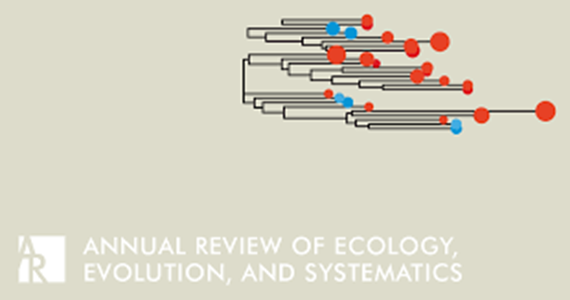变化和变气候条件下热敏性的演化
IF 11.2
1区 生物学
Q1 ECOLOGY
Annual Review of Ecology, Evolution, and Systematics
Pub Date : 2021-09-03
DOI:10.1146/annurev-ecolsys-011521-102856
引用次数: 24
摘要
对温度和气候的进化适应既取决于生物体经历空间和时间环境变化的程度(暴露),也取决于它们对环境变化的反应程度(敏感性)。理论模型和实验表明,热适应的巨大潜力在很大程度上忽略了现实的环境变化。环境变化会导致选择的波动,从而减缓适应性进化。我们回顾了如何根据生物体如何体验其环境并进一步考虑生物体敏感性来仔细过滤环境条件可以改善热适应的预测。我们对比不同的分类群在暴露和敏感性。可塑性可以提高暴露于明显环境变化的分类群的进化适应速度。然而,严重限制暴露的可塑性形式,如行为体温调节和物候变化,可能会阻碍热适应。尽管有快速热适应的例子,实验研究经常揭示进化限制。需要进一步研究这些限制和时间尺度和热历史问题,以预测进化适应,从而预测种群在变化和可变环境中的持久性。预计《生态、进化和分类学年度评论》第52卷的最终在线出版日期为2021年11月。修订后的估计数请参阅http://www.annualreviews.org/page/journal/pubdates。本文章由计算机程序翻译,如有差异,请以英文原文为准。
Evolution of Thermal Sensitivity in Changing and Variable Climates
Evolutionary adaptation to temperature and climate depends on both the extent to which organisms experience spatial and temporal environmental variation (exposure) and how responsive they are to the environmental variation (sensitivity). Theoretical models and experiments suggesting substantial potential for thermal adaptation have largely omitted realistic environmental variation. Environmental variation can drive fluctuations in selection that slow adaptive evolution. We review how carefully filtering environmental conditions based on how organisms experience their environment and further considering organismal sensitivity can improve predictions of thermal adaptation. We contrast taxa differing in exposure and sensitivity. Plasticity can increase the rate of evolutionary adaptation in taxa exposed to pronounced environmental variation. However, forms of plasticity that severely limit exposure, such as behavioral thermoregulation and phenological shifts, can hinder thermal adaptation. Despite examples of rapid thermal adaptation, experimental studies often reveal evolutionary constraints. Further investigating these constraints and issues of timescale and thermal history are needed to predict evolutionary adaptation and, consequently, population persistence in changing and variable environments. Expected final online publication date for the Annual Review of Ecology, Evolution, and Systematics, Volume 52 is November 2021. Please see http://www.annualreviews.org/page/journal/pubdates for revised estimates.
求助全文
通过发布文献求助,成功后即可免费获取论文全文。
去求助
来源期刊
CiteScore
19.90
自引率
1.70%
发文量
21
期刊介绍:
The Annual Review of Ecology, Evolution, and Systematics is a scholarly publication that has been in circulation since 1970. It focuses on important advancements in the areas of ecology, evolutionary biology, and systematics, with relevance to all forms of life on Earth. The journal features essay reviews that encompass various topics such as phylogeny, speciation, molecular evolution, behavior, evolutionary physiology, population dynamics, ecosystem processes, and applications in invasion biology, conservation, and environmental management. Recently, the current volume of the journal transitioned from a subscription-based model to open access through the Annual Reviews' Subscribe to Open program. Consequently, all articles published in the current volume are now available under a CC BY license.

 求助内容:
求助内容: 应助结果提醒方式:
应助结果提醒方式:


